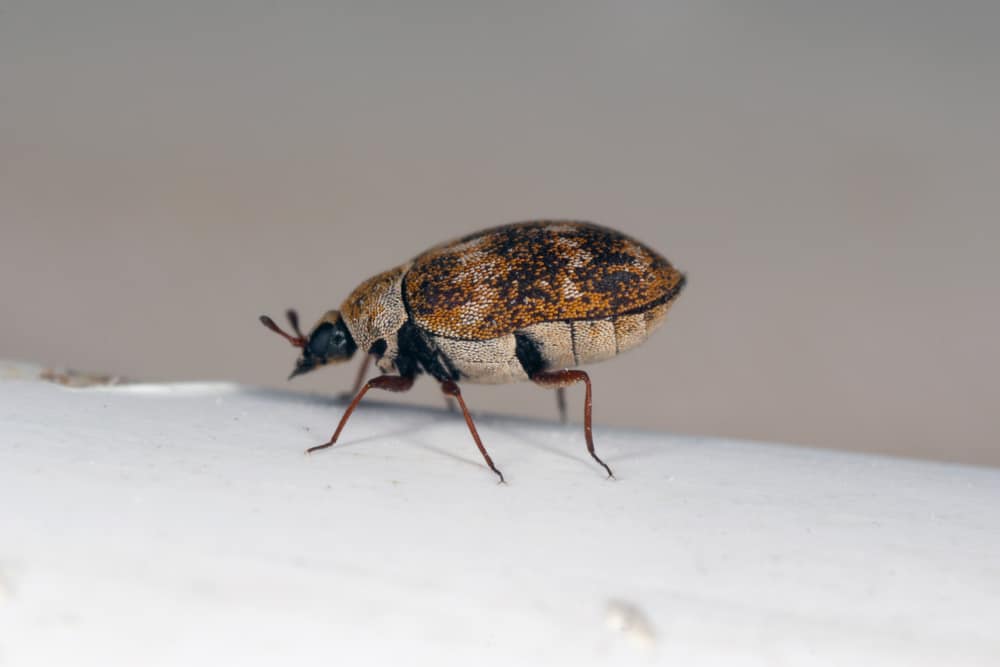As a pretty urbanized state, New Jersey doesn’t have some of the insect pests common in other states, at least not in the same quantities. At the same time, certain house bugs that do particularly well in urban environments are especially common here as they are in other northeastern states as well. So, which are the 8 common house bugs in New Jersey you need to be wary of, and what to do about them?
8 common house bugs in New Jersey
Naturally, there are much more than just 8 common house bigs in New Jersey, especially if we count the various seasonal invaders and the countless types of bugs that can fly in through the window on occasion to pester your potted plants. Add the various rodent pests and homeowners in NJ have a lot on their plate. The following 8 insects are among the most common and annoying house bugs, however, and are worth special attention.
1. Cockroaches

Credit: invertebratedude
Of all the insects that can infest your New Jersey home, cockroaches are probably the most common pest in urban areas. They are well known for nesting in the plumbing and walls of houses and apartment buildings, and can often be seen scavenging for food in people’s bathrooms, basements, and kitchens. What’s worse, they are major disease spreaders which is why they should be dealt with swiftly and effectively.
All three of the cockroach species commonly found in US households can be found in New Jersey. These are the German cockroach, American cockroach, and Oriental cockroach.
What to do about it: Unfortunately, the different species require different insecticides so the first step to solving the problem is identifying which type of cockroach you’re dealing with. Fortunately, telling them apart is easy – American cockroaches are up to 2 inches large and brown, German cockroaches are about half an inch in length and are also brownish, while Oriental cockroaches are mid-sized and black.
Once you know what you’re up against, the next step is to get a proper insecticide and start spraying and trapping key areas of your home. If that doesn’t work, you may need to resort to whole-house fogging.
2. Ants
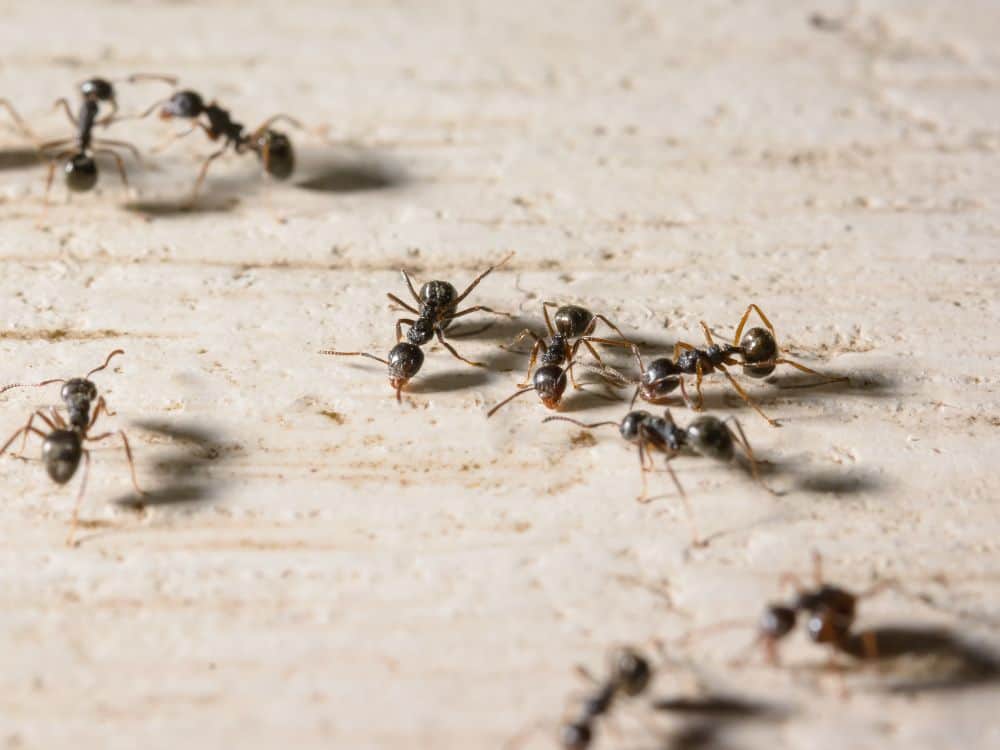
Most ants don’t transmit diseases the way cockroaches do and they aren’t as ferocious biters or stingers as other insects. They can still be a major nuisance in large numbers, however, and are one of the most common household pests in North America as a whole.
Fortunately, the one extra nasty type of American ant – the Fire ant – isn’t present in New Jersey. Of the ant species that are, Carpenter ants are the most commonly maligned ones because of their power powerful bites. Even they don’t pose that much of a health risk, however, and are more annoying than anything else.
What to do about it: Dealing with a full-blown ant infestation is time-consuming and frustrating, as these insects are very hardy. Insecticide sprays and ant traps can only go so far if the ant colony is embedded deep enough in your home’s foundation, so, fog bombing may be required on occasion.
After that, prevention against future infestations includes sealing off all the cracks and crevices in your home’s exterior and cutting off access to all possible ant food sources such as trash, food scraps, pet food, and others.
3. Bed bugs
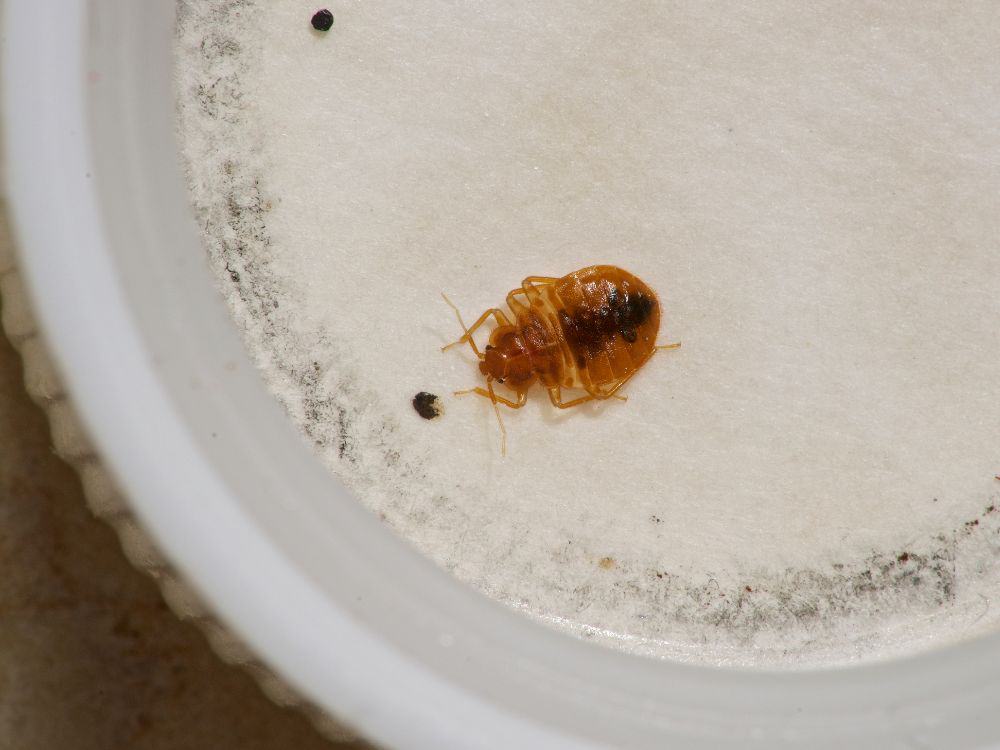
Bed bugs are a universal problem and New Jersey sadly isn’t spared. These spread from one home to another by hitchhiking on people’s clothes and luggage when we travel, visit friends and hotels or use public transit. Bed bugs also aren’t seasonal because they spend pretty much their entire lifecycles indoors and inside people’s mattresses and furniture.
The good news is that bed bugs don’t spread any diseases. This doesn’t make them any less infuriating to deal with, however, as their numerous bites can be incredibly itchy. A bed bug infestation is also notoriously difficult to take care of.
What to do about it: Many people resort to professional bed bug control services as bed bug nests can be almost impossible to get rid of without whole-home fogging. Another aspect of pest control is heat-treating your bedding and clothes in washing machines to deal with the bed bugs’ eggs but that alone is rarely sufficient.
4. Spiders
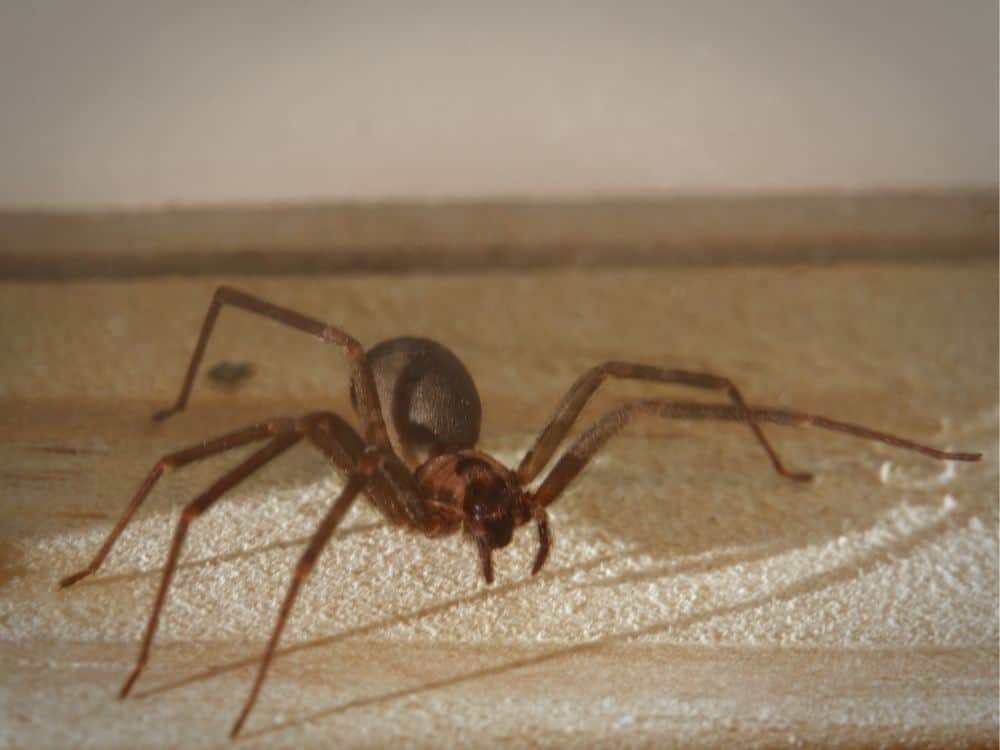
Most spiders aren’t seen as pests as they don’t transmit diseases and don’t prey on people. In fact, they are typically beneficial as they hunt down actual pests such as flies, mosquitoes, ants, cockroaches, and others.
There are some spider species, however, that have venom strong enough to trouble people. Of those, the species that can be found in New Jersey include Brown recluse spiders, wolf spiders, and widow spiders. Even those species don’t actively seek out people to bite, however, they can bite in self-defense which can be a problem as their venom is strong enough to hurt and even hospitalize people.
What to do about it: If you’re only facing a single venomous spider, killing it is usually easy – just don’t use your bare hand and you likely won’t get bitten. If you’ve just found a full-blown infestation in your basement, crawlspace, or backyard shack, however, you may need a lot of insecticides to deal with it from a distance. Don’t hesitate to seek out professional help too as that’s the safest option.
5. Mosquitoes
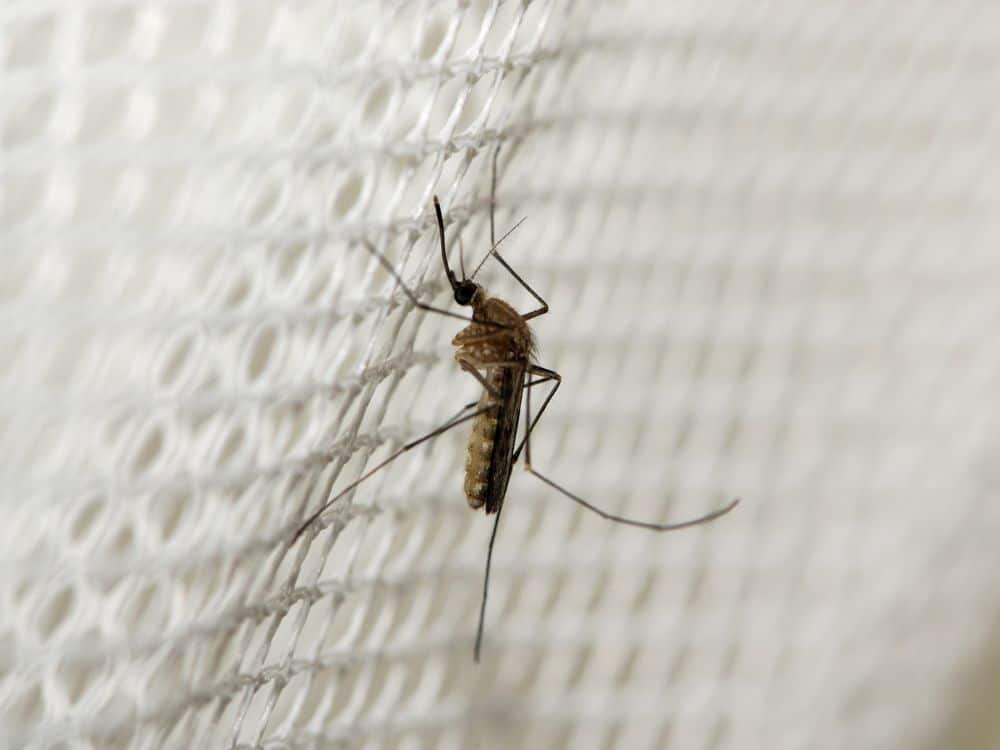
Fortunately for NJ residents, mosquitoes aren’t as common there as they are in other parts of the world. They can still be a problem during the warmer months, however, as females will frequently sneak into people’s homes to bite during the night. They can also transmit diseases such as malaria, yellow fever, dengue fever, and others. Males, fortunately, don’t bite.
What to do about it: Installing window screens is the best way to protect our home from mosquitoes and other flying pests. When outside, using bug sprays and long-sleeved shirts and pants are the main options we have.
6. Carpet beetles
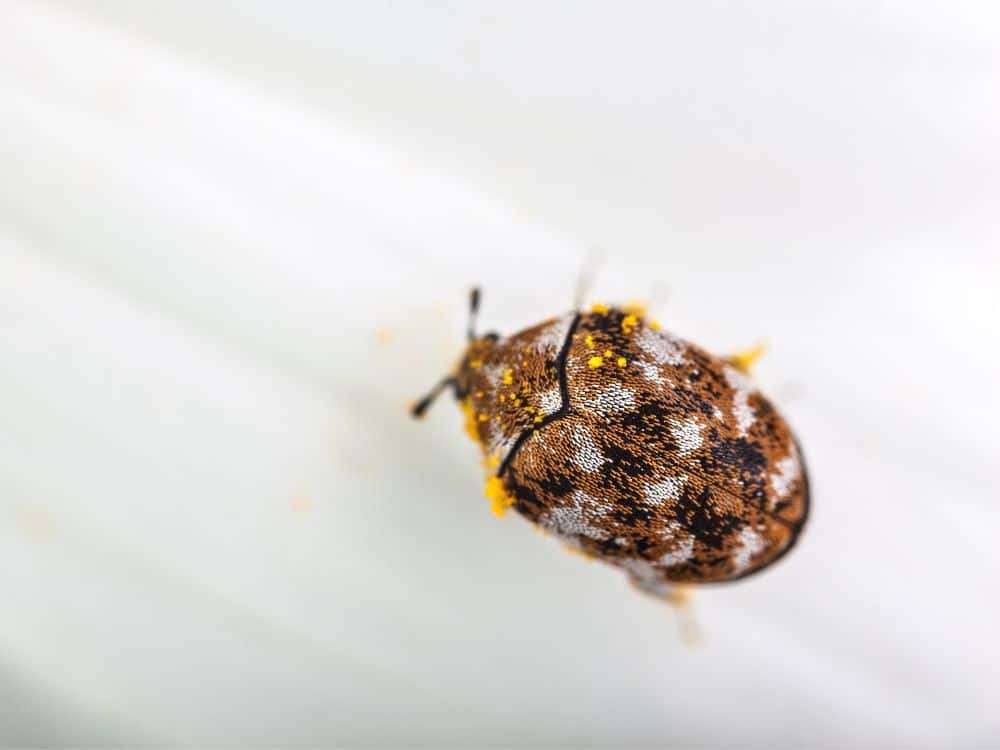
These tiny beetles can be incredibly destructive to the silk, fur, linen, cotton, wool, and wood items in your home such as your carpet, furniture, and clothes. They can also attack food storage items such as cereal, nuts, maize, grain, and others.
This wide dietary range, coupled with their tiny size and fast reproduction makes carpet beetles incredibly difficult to deal with.
What to do about it: Throwing away infested items and fog-bombing everything else is usually the way to go unless you’ve been lucking enough to catch the infestation in its inception.
7. Silverfish
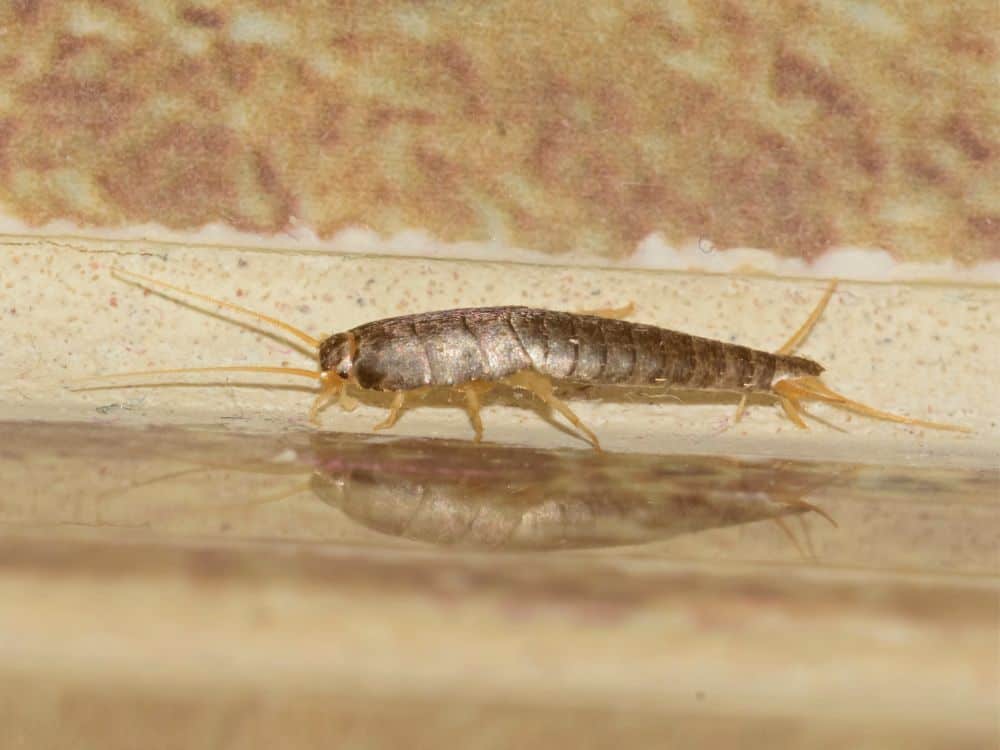
These tiny insects don’t sting or bite and they don’t transmit diseases. Outdoors, they normally just feed on plant matter such as mulch and leaf mold. Indoors, however, they satisfy their need for carbohydrates by going after wallpaper paste, laundry starch, flour, paper sizing, box glue, cereal, sugar, fabrics made from cotton, silk, or linen, as well as paper and books.
What to do about it: Thankfully, silverfish have a low reproductive rate and their infestations don’t grow all that fast. So, as long as you notice their presence soon and act quickly, you should be able to get rid of them before they have managed to do any serious damage to your home and possessions. The easiest way to do that is by spreading a thin layer of Borax on areas that you’ve seen silverfish before.
8. Pantry invaders
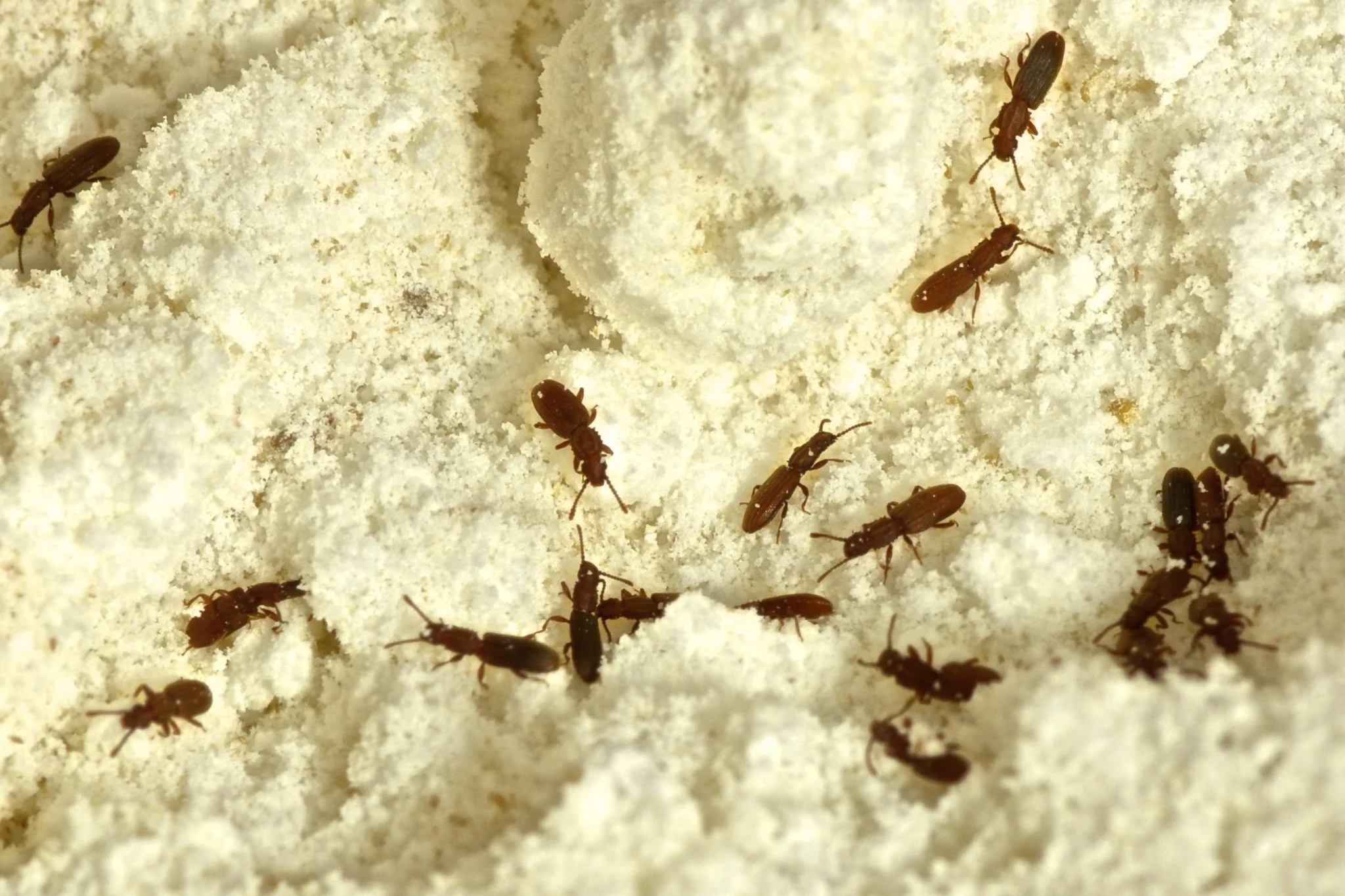
Credit: graduatepestsolutions
There are many New Jersey house bugs that don’t bother people or transmit diseases but that go after the food in our pantries. These include bugs such as rice weevils, Indian meal moths, Confused flour beetles, drugstore beetles, sawtooth grain beetles, and others. Even though such pests are technically “safe”, they still aren’t something we want in our food.
What to do about it: Dealing with such pests will often require throwing away the infested food supply, emptying the pantry, spraying it with insecticide, and letting it air out before resupplying with food. When trying to separate the infested from non-infested food packages, be extra careful not to miss an infested package by accident as they will lead to a second infestation pretty soon.
Other insect pests
As NJ isn’t a particularly rural state, various insect pests that are common elsewhere aren’t as frequently seen there. They are still present, however, and can be encountered occasionally. Such insects include stinging bugs such as yellowjackets, bees, hornets, and wasps, as well as mites such as fleas and ticks that often transmit Lyme disease through their bites.
Invasive species such as termites can also be encountered and there are other nuisances such as spotted lanternflies, centipedes, and others. The frequency at which such pests are encountered pales in comparison to the 8 common house bugs above. NJ residents should still be mindful of them, however, especially as far as ticks are concerned.
In Conclusion
Insect house pests are frustrating nuisances at best and life-threatening disease transmitters at worse. What’s more, the various house bugs require different measures to deal with. The good news, however, is that infestation prevention usually looks quite similar as it almost always has to do with keeping your home well-insulated and clean.
